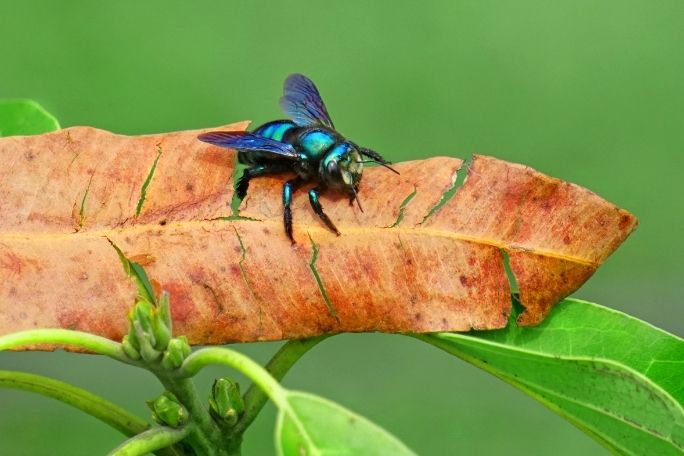Lesson summary
In this activity, children are given the opportunity to explore Australian native bees. They will begin by looking at pictures of native bees and finding out why native bees are important. They will then go outside to observe bees and other pollinators in the garden or park. Finally, children can create artworks about bees to share with an audience. This activity also includes information about improving native bee habitats in your own garden.
Lesson guides and printables
Lesson details
Curriculum Mapping
Learning Outcome 2:
- Children are connected with and contribute to their world
- 2.4 Children become socially responsible and show respect for the environment
Learning Outcome 4:
- Children are confident and involved learners
- 4.1 Children develop dispositions for learning such as curiosity, cooperation, confidence, creativity, commitment, enthusiasm, persistence, imagination and reflexivity
- 4.2 Children develop a range of skills and processes such as problem solving, inquiry, experimentation, hypothesising, researching and investigating
Resources required
- Art-making materials (i.e. paper, coloured pencils, markers, crayons, or paint)
- Bee Safe Factsheet
- Insect Pollinator Observation Sheet (optional)
- Native Bee Anatomy
- Native Bee Bunting Template
- Native Bee Finger Puppet Template
- Native Bee Flashcards
- Role-Play Activity
Additional info
Learning@Home resources are designed for parents and teachers to use with children in the home environment. They can be used as stand-alone activities or built into existing curriculum-aligned learning programs. Our Learning@Home series includes two types of resources. The first are fun and challenging real-world activities for all ages, the second are self-directed lessons for upper primary and secondary students. These lessons support independent learning in remote or school settings.


Welcome back!
Don't have an account yet?
Log in with:
By signing up to Cool.org you consent and agree to Cool's privacy policy to
store, manage and process your personal information. To read more, please see
our privacy policy here(Opens in new tab).
Create your free Cool.org account.
Many of our resources are free, with an option to upgrade to Cool+ for premium content.
Already have an account?
Sign up with:
By signing up to Cool.org you consent and agree to Cool's privacy policy to
store, manage and process your personal information. To read more, please see
our privacy policy here(Opens in new tab).